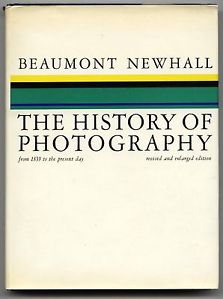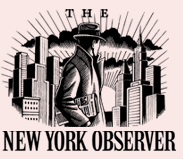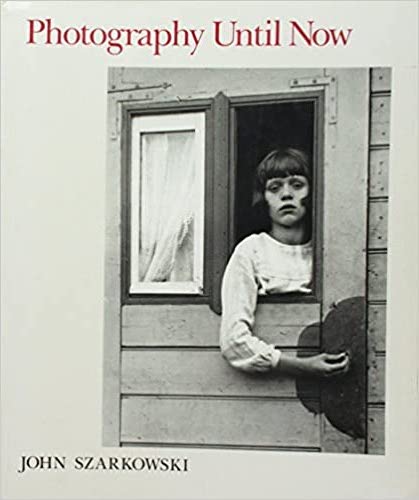 [This is the third in a series of decade-by-decade posts of material from my archives. For the second, click here.
[This is the third in a series of decade-by-decade posts of material from my archives. For the second, click here.
In 1988 I established a column for myself at the weekly New York Observer, my first platform in a general-audience, multi-subject periodical since leaving the Village Voice in 1973 and the New York Times in 1974.
With a deeper understanding of photography’s history and field of ideas, underpinned by research in the medium’s prehistory, not to mention a decade and half of honing my craft as a writer, I returned to the reviewing of books and exhibitions and running critical commentary on a vastly expanded and internationalized photography scene.
The following review appeared just over 30 years ago in the March 12, 1990 issue of the Observer, under the headline “Era of Photography at MoMA Ends With Whimper.” (Not my words — newspaper headlines never were — but definitely apropos.) You can also find it in my 1995 book Critical Focus: Photography in the International Image Community.— A.D.C.]
•
John Szarkowski: “Photography Until Now” at MoMA
Cagey strategist and baseball aficionado that he is, John Szarkowski, in what is possibly the last inning of his curatorial career as head of the Department of Photography at the Museum of Modern Art, has chosen to throw a sucker pitch masquerading as a curve ball. Or vice versa. At least that’s how this observer reads “Photography Until Now,” Mr. Szarkowski’s version of the history of photography, which has just made its debut in both book and exhibition form under MoMA’s auspices (11 West 53rd Street, February 18-May 29).
 Coming as it does at the tail end of the world-wide sesquicentennial celebration of photography’s public birth, the project can be seen as the Modern’s renewed claim to authority as a source of substantial historianship in the medium. That claim was initially staked out in 1937, when Beaumont Newhall organized the museum’s pioneering first survey of the history of photography, accompanying it with a catalogue that subsequently turned into a monograph. That volume, in turn, became the standard reference in the field, essentially unchallenged for three decades and still the best-known (and best-selling) history of the medium in English.
Coming as it does at the tail end of the world-wide sesquicentennial celebration of photography’s public birth, the project can be seen as the Modern’s renewed claim to authority as a source of substantial historianship in the medium. That claim was initially staked out in 1937, when Beaumont Newhall organized the museum’s pioneering first survey of the history of photography, accompanying it with a catalogue that subsequently turned into a monograph. That volume, in turn, became the standard reference in the field, essentially unchallenged for three decades and still the best-known (and best-selling) history of the medium in English.
Mr. Newhall’s is a very readable tome. Essentially, it’s the movie version of the history of photography, its final draft written with the guidance of a Hollywood screenwriter and “play doctor.” Its biases and shortcomings are many, and serious; they have inspired at least two decades of revisionism. But it is a work based on seminal scholarship, which makes it still useful as a reference even though many of its author’s opinions are long outdated.
Mr. Szarkowski’s volume (Bulfinch Press/Little, Brown; $60 hardbound, $30 paper) is equally readable, but for another reason: it’s genuinely well-written, perhaps more finely crafted as a piece of prose than any other work on this topic of comparable length in English. Elegance, verve, grace, wit, affection, and honed sarcasm are in evidence throughout. I absorbed it in one sitting, on a non-stop plane trip to California, which offers some index of its engagingness and entertainment value — and, perhaps, of its substance.
For, although it is at its strongest in its discussion of 19th-century photography, this is not a work of scholarship. That comes as no surprise; his labors on the Eugène Atget archives aside, Mr. Szarkowski is not known as a scholar. Indeed, to make this point clear, no bibliography is included (though there are footnotes, mostly rudimentary). Nor is it a major theoretical enterprise, though its ostensible thesis is that the medium’s imagistic evolution has been determined largely by technological developments that were outside the control of most of its practitioners.
This is not a new idea, by any means, but I’ve rarely seen those changes described so lucidly. Mr. Szarkowski’s skill as a writer and his craft experience as a photographer — for he was a working picture-maker when, as a dark-horse candidate, he was brought in to replace Edward Steichen in 1963 — meld marvelously in the passages which discuss the making of photographs.
This may not be scholarship, or original theory, but it is cogent, thoughtful, and thought-provoking. Unfortunately, running along with it on the same set of tracks are several other contenders for our attention. One of these is a set of decidedly eccentric opinions as to which photographers exemplify these issues and thus merit mention in such an account. Mr. Szarkowski is not so inclined as was Mr. Newhall to use his history as a vehicle on which to assemble his pantheon, but that may be because he’s constructed it in previous shows — the four-part Atget project, the “New Documents” show of 1967, the Walker Evans and Diane Arbus and Garry Winogrand retrospectives, for example. [Click here for my discussion of “New Documents,” and here for my review of the Winogrand retrospective.]
Many photographers are mentioned in this text, quite a few of them praisingly, most of them in passing. They are rarely linked directly to his technological thesis, and no supporting argument is ever offered for the curator’s assessment of them; the judgment is simply asserted, in a word or short phrase, though usually in a cunning enough style that the paean seems modestly qualified and the evaluation a matter of wide consensus. This is Mr. Szarkowski at his most clever and manipulative — which, to my way of thinking, is at his weakest.
Here the work degenerates into connoisseurship — or, more precisely, taste-mongering. Connoisseurship, after all, despite the bad rap it’s received in recent years, implies first-hand knowledge of the work in question and the ability to discuss its specific, unique qualities. But Mr. Szarkowski indulges himself here in what I would have to call minimalist or conceptual connoisseurship; he actually has little to say about most of the bodies of work he mentions and nothing particular to say about any of the pictures, though he does make clear by innuendo what he favors and what he loathes.
 Which brings us to the pictures. A history of a visual medium is usually a rationale for some selection of representative images. But why this set was picked mystifies me, even after reading the book; it will surely confound those who encounter the exhibit first, since the show’s wall texts are much briefer and make no reference to any of the images. For here we have a survey that presumably updates the Newhall project yet includes five images each by Paul Martin, Charles Marville and William Henry Fox Talbot but only one by Robert Frank, Diane Arbus, Roy DeCarava and Manuel Alvarez Bravo; four apiece by Edward Steichen and Charles Nègre, yet none by Ralph Gibson, Duane Michals or Les Krims. Out of more than 180 photographers represented, only sixteen are women, only one is black. Of the almost 300 images, over one-quarter are by photographers either literally anonymous or virtually so, leaving us with only single images by which to gauge them. And the curator’s lack of interest in or active distaste for most photography since 1960 is palpable.
Which brings us to the pictures. A history of a visual medium is usually a rationale for some selection of representative images. But why this set was picked mystifies me, even after reading the book; it will surely confound those who encounter the exhibit first, since the show’s wall texts are much briefer and make no reference to any of the images. For here we have a survey that presumably updates the Newhall project yet includes five images each by Paul Martin, Charles Marville and William Henry Fox Talbot but only one by Robert Frank, Diane Arbus, Roy DeCarava and Manuel Alvarez Bravo; four apiece by Edward Steichen and Charles Nègre, yet none by Ralph Gibson, Duane Michals or Les Krims. Out of more than 180 photographers represented, only sixteen are women, only one is black. Of the almost 300 images, over one-quarter are by photographers either literally anonymous or virtually so, leaving us with only single images by which to gauge them. And the curator’s lack of interest in or active distaste for most photography since 1960 is palpable.
I could go on, and I’m sure others will. There are certainly pleasures to be found in the text, and many more to be found in the images; Mr. Szarkowski has a good eye, though in connoisseurship as in picture-making that quality is only a starting point. But what is most keenly manifest here is an exhaustion, even an ennui, along with an abdication of responsibility.
 Even if — especially if — this show is, as some have suggested, Mr. Szarkowski’s curatorial swan song, he owes his profession that closely reasoned and buttressed argument that presumably connects the lineage he’s promoted all these years: Atget to Evans through Frank to Arbus, Friedlander and Winogrand. But Mr. Szarkowski’s heart is no longer in the game. So what we’re offered instead is merely a set of pictures John Szarkowski likes — a comparative bagatelle which even he has taken to describing (on a recent NPR program) as a kind of freeform experiment in process whose outcome he could not foresee. Such a misuse of power, prestige and influence is an effective if lamentable indication of why the Modern’s credibility and influence on the medium have waned so dramatically during the last decade of his tenure.
Even if — especially if — this show is, as some have suggested, Mr. Szarkowski’s curatorial swan song, he owes his profession that closely reasoned and buttressed argument that presumably connects the lineage he’s promoted all these years: Atget to Evans through Frank to Arbus, Friedlander and Winogrand. But Mr. Szarkowski’s heart is no longer in the game. So what we’re offered instead is merely a set of pictures John Szarkowski likes — a comparative bagatelle which even he has taken to describing (on a recent NPR program) as a kind of freeform experiment in process whose outcome he could not foresee. Such a misuse of power, prestige and influence is an effective if lamentable indication of why the Modern’s credibility and influence on the medium have waned so dramatically during the last decade of his tenure.
Fortunately for those who will carry on the work elsewhere, it will be easier to deconstruct Mr. Szarkowski’s history than it was Mr. Newhall’s, because this project makes no significant research contribution to the medium’s historiography that requires disentangling. Perhaps, too, it was doomed from the very start. It’s now obvious that photography is a complex phenomenon, and a global one, so much so that we’ve clearly reached the end of the era of synoptic surveys of the medium. The Museum of Modern Art published what was really the first North American attempt at a comprehensive single-volume history of photography. Let us hope that it has now published the last.
•
[Note: You can download the MoMA press release for this exhibition here, and an accompanying “fact sheet” here.]
•
This post sponsored by a donation from Carlyle T.
•
Special offer: If you want me to either continue pursuing a particular subject or give you a break and (for one post) write on a topic — my choice — other than the current main story, make a donation of $50 via the PayPal widget below, indicating your preference in a note accompanying your donation. I’ll credit you as that new post’s sponsor, and link to a website of your choosing.







I have to say John was something else at the William Eggleston Opening back many moons ago my Dad and I just happen to be there – What a time we had I thought the reporter from the N.Y.T was going to loose his cookies – Dad and I love the show – Thanks for the article A.D – And the memories – Artist Peter Herley
I find myself ranting about contemporary criticism here maybe too much, in which case, you have my apology.
Your remarks above make me wonder if Szarkowski is somehow to blame for the modern style in which the critic blathers on at some length, but when they finally get around to saying something about the pictures all they can manage to get out is something like “of course, the images are superb” and that’s about it.
There seems to be no framework whatever in play, it’s just a lot of words to conceal what is a sort of lightweight personal opinion held by someone who doesn’t seem to care, which sounds suspiciously similar to Szarkowski’s book.